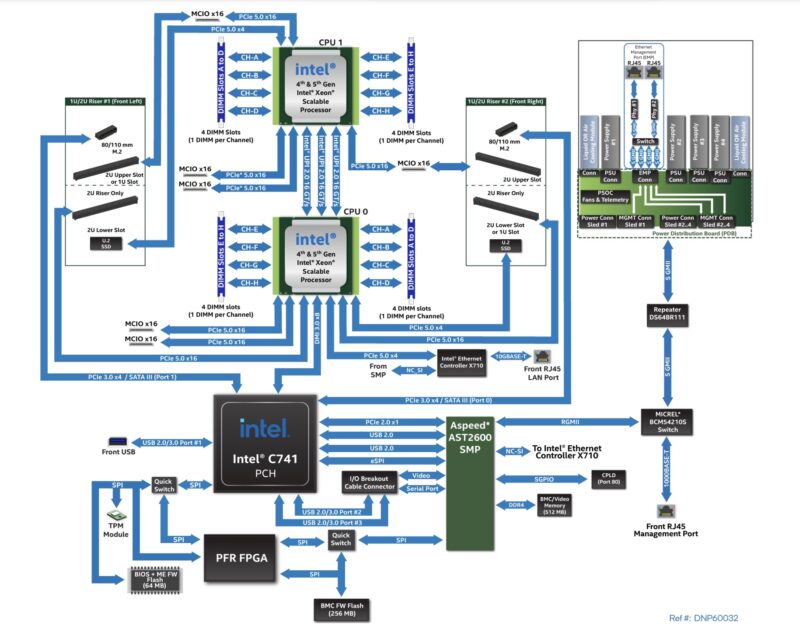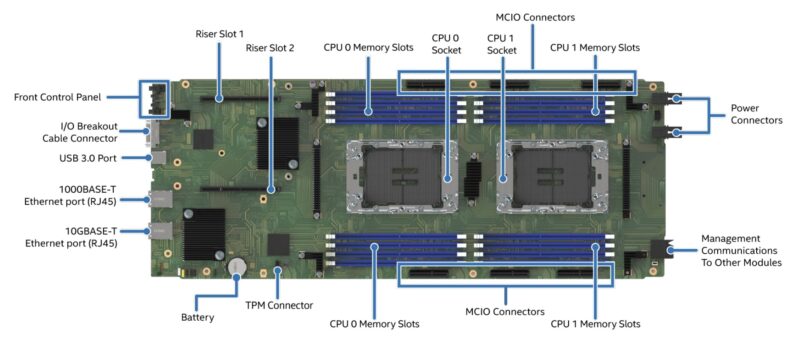MiTAC Intel Denali Pass Block Diagram
This is probably one of the best block diagrams you will see.

The FPGA that is onboard is for the PFR feature, and we can see things like the ASPEED AST2600 BMC as well as the Intel X710 10Gbase-T NIC.

Here is the motherboard annotated with call-outs in case we missed something you were interested in during the hardware overview.
We are not going through the management on this system since it is fairly standard and we have seen it before. Instead, let us talk about performance.
MiTAC Intel Denali Pass High-End Liquid Cooled 2U 4-Node Performance
When it comes to the performance of this system, we were lucky. We tested the Intel Xeon MAX 9480 Deep-Dive 64GB HBM2e Onboard Like a GPU or AI Accelerator in a Denali Pass 2U node previously, so we had that data.
There is a lot of misconception about liquid cooling, so instead of looking at chips that we looked at before, let us talk a bit about performance and what is going on here.
First, taking a look at lower TDP CPUs here is what we saw:

The key takeaway here is that the performance is very similar. In these cases, we are really harvesting the power consumption gains of using liquid versus fans for cooling. The performance comes from putting higher-performance and higher-power SKUs in the systems.
Taking a look at the Intel Xeon Max CPU in the liquid-cooled version was different.

Aside from the power savings, the density was also much higher. We can have four of these in 2U, whereas our air-cooled version is one node in 2U. On one hand, you might say that the per-node performance is similar, and that is fair. Of course, if you are space-limited, then one could also say this is four times as dense, so you can get four times the performance. Alternatively, if you are power-limited, saving 16-17% on the power may mean you can get 16-17% more performance from your cluster. A third way to look at the jump is that instead of being limited to 250-270W CPUs in a 2U 4-node design, this allows for higher core count and higher performance 350-385W TDP CPUs.
Next, let us get to the power consumption savings and our key lessons learned.




It’s a work of art by former Intel guys. Unfortunately, no successors